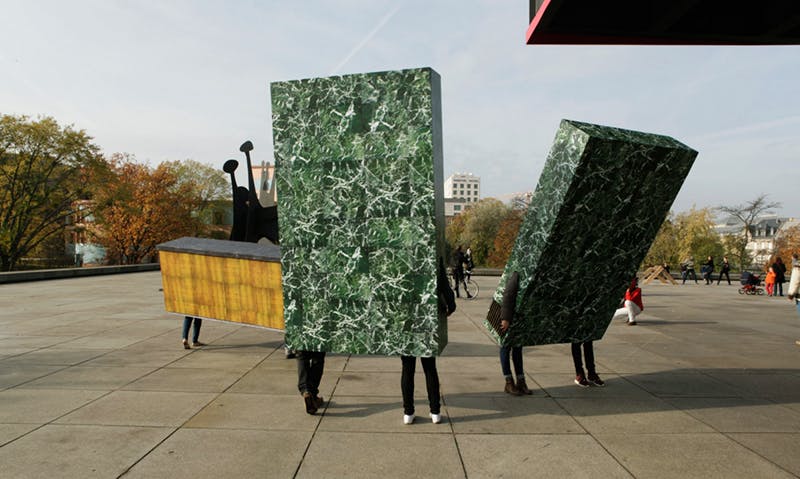Assembly
Álvaro Urbano
ended 1924 days ago
Aug 1, 2020 to Sep 19, 2020
location
Storefront, Queens Museum
Program
It’s gloomy, but you can still see. The wind blows and the sun is about to rise. You can hear dry leaves cracking as you walk. The sound of breathing from afar indicates that the building, while tired and deteriorating after many different periods of use, remains alive.
Alvaro Urbano’s Assembly animates buildings that have been forgotten, or rather, left without a use. His sculptural works are activated through a newly commissioned performative piece that references the grounds of the World’s Fair in Flushing Meadows Corona Park. Acknowledging the many lives of buildings, the work comments on their afterlife and the stories they contain.
Assembly unfolds first at Storefront’s gallery space, which is transformed into a living-building workshop. Here, Urbano creates pieces that will then come to life through a performance at the Queens Museum of Art—a building that was initially the New York City Pavilion at the 1939 World's Fair. Since then, it has gone on to have many uses, serving such functions as a recreation center with skating rinks and a temporary assembly hall of the United Nations when the organization was first established.
Urbano’s Assembly performance is the centerpiece of a major event that gathers all the participants of Storefront’s exhibitions from the previous year. This assembly is an opportunity to reflect upon and create connections between programs, and to engage in a critical dialogue about the nature of our built environments.
The daylong event will occupy various spaces in and around the Queens Museum and is the culminating moment of the 2019-2020 Building Cycles program, setting the stage for a new life cycle to emerge.
Artist
Alvaro Urbano (b. 1983, Madrid, Spain) is a visual artist based in Berlin.
He studied at the Architecture School in Madrid and completed his studies at the Institut für Raumexperimente (studying under Olafur Eliasson), Universität der Künste, Berlin. Urbano’s practice unfolds through an experimental process by creating synergies between living entities and dynamic structures, and by scripting time-space based situations that result from a strong interest in architecture and fiction. His works were shown in solo and group exhibitions including Kölnischer Kunstverein, Cologne (2016); Bundeskunsthalle Bonn (2015); Neue Nationalgalerie, Berlin (2015); and Pavilion Social Kunstverein, Lucca (2014). In 2014, he received the Villa Romana Prize.






